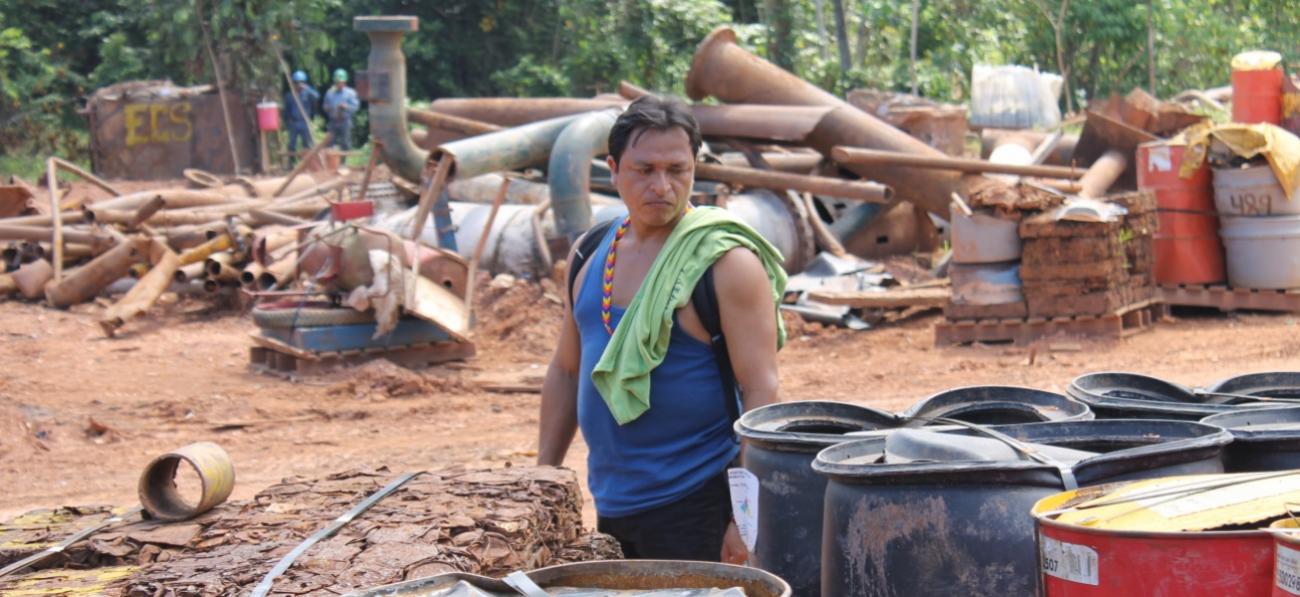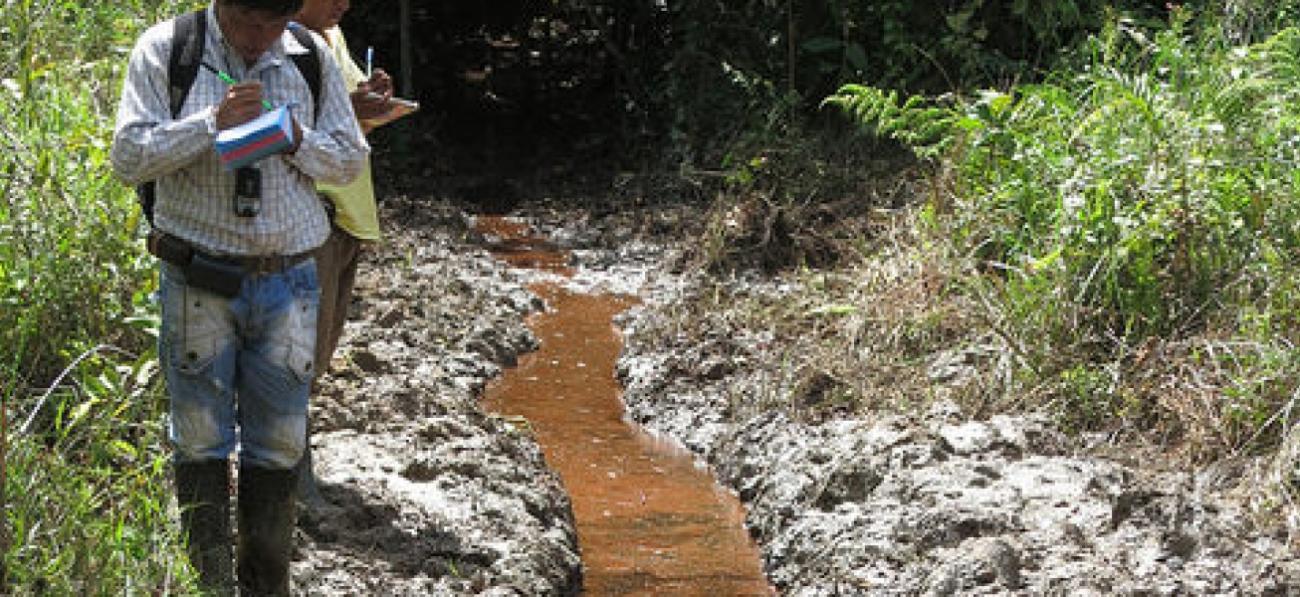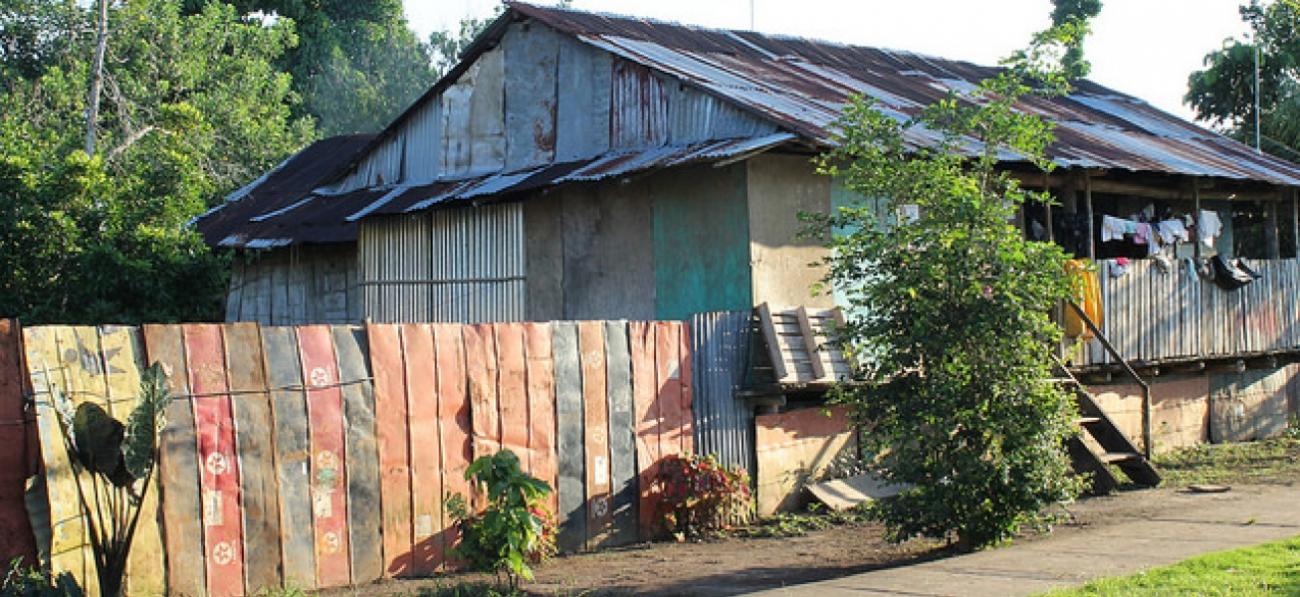


Haz clic para versión en Español
The Amazon: known for its incredible biodiversity, thriving rivers, rich Indigenous culture and now, deep contamination from toxic waste dumped for decades by the petroleum industry.
Days of navigation along the windy Pastaza River in northern Peru, one finds Nuevo Andoas, a small town literally built on the scraps of 43 years of petroleum extraction, headquarters to the Argentine company Pluspetrol Norte. The company’s concession covers three watersheds in one of the most bio-diverse areas in the world, the Amazon Rainforest.
Toxic waste: 9 billion barrels and counting
Starting in 1971, a systematic disregard for environmental and social impact has led to devastating effects on the area and the Indigenous people who inhabit it. The original owners of the concession, US-based company Occidental Petroleum, illegally dumped their industrial waste (known as “production waters”) directly into the Pastaza, Tigre, and Corrientes rivers for 30 years, averaging about 850,000 barrels each day. The accumulated 9 billion barrels contained toxic substances such as barium, lead, arsenic, mercury, aluminum, iron, and cadmium.
The State of Peru has reported 25 spills occurring in Block 1AB between 2010 and 2011 alone, while local Indigenous monitors have counted over 100 crude oil spills in the last 5 years. This information, along with visits by members of Congress to the affected areas, led Peru to declare an Environmental State of Emergency in March of 2013. But that declaration has still not initiated adequate responses to thoroughly clean up the contaminated areas.
The contamination is slowly poisoning the Indigenous communities who live there, including the Quechua peoples. High concentrations of heavy metals are known to lead to lung cancer, heart disease, kidney failure, and brain damage, among other diseases. But Indigenous people who depend on the land to survive must continue to fish, hunt, and grow food on these lands. They bathe, wash, and cook with, and drink the water knowing it means exposure to toxic contaminants.
Elmer Hualinga, Quechua, lives in Nuevo Andoas with his family and experiences this trauma firsthand: “Despite the fact that the government has declared an Environmental State of Emergency, we don’t have water, we don’t have food. How can we ensure the lives of our children? It’s the saddest thing in the world. It makes me want to weep, to cry out, why are they doing this to us? But the reality is that they don’t respond to that. My children are going to suffer the consequences. They won’t experience a clean environment. That is a huge concern for us as Native peoples.”
While billions of dollars worth of oil have been taken from their lands, Indigenous Quechua still lack access to basic services and potable water, a jarring disjunction between their abject poverty and the “black gold” being extracted at a rate of 15,000 barrels per day. After 40 years, the concession for Block 1AB expires in 2015, and the State of Peru is eager to renew it. But before that happens, the Indigenous communities are demanding the State of Peru remediate the disaster it has created on their lands.
The State of Peru must listen to people like Elmer.
TAKE ACTION by writing to the President of Peru and demanding cleanup of the affected areas.
